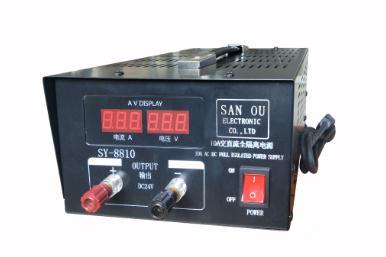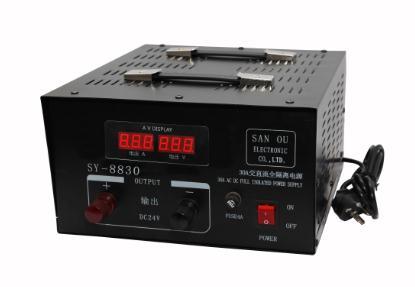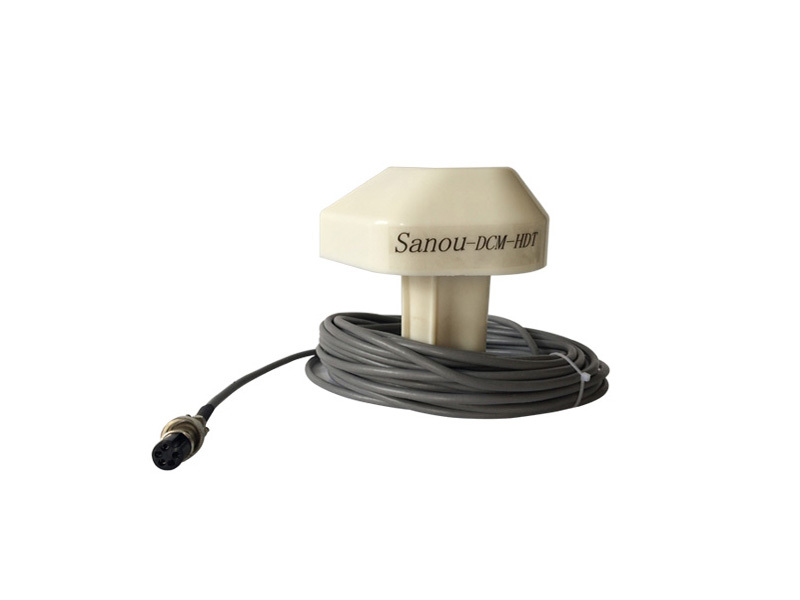News Center
Understanding Marine Analog Steering Instruments: A Comprehensive Guide
Understanding Marine Analog Steering Instruments: A Comprehensive Guide
Table of Contents
- Introduction to Marine Analog Steering Instruments
- What are Analog Steering Instruments?
- Types of Marine Analog Steering Instruments
- Functionality of Marine Analog Steering Instruments
- Advantages of Using Analog Steering Instruments
- Common Issues and Maintenance
- The Future of Analog Steering Instruments in the Marine Industry
- Conclusion
- FAQs About Marine Analog Steering Instruments
Introduction to Marine Analog Steering Instruments
Marine navigation is an intricate dance of technology, experience, and precision. Within this realm, marine analog steering instruments play a crucial role in ensuring safe and effective navigation. These instruments provide essential data to the mariner, enabling them to steer their vessel accurately and respond to changing conditions on the water. This comprehensive guide aims to demystify the various aspects of marine analog steering instruments, from their types and functionalities to their maintenance and future prospects.
What are Analog Steering Instruments?
Analog steering instruments are mechanical devices designed to display real-time data for vessel navigation. Unlike their digital counterparts, these instruments use needles and dials to present information visually. This type of instrumentation is often favored in marine applications for its simplicity, ease of use, and reliability in harsh environments. Key components typically found in these devices include:
- **Dials** and **Needles**: The primary visual indicators that provide crucial information such as heading, speed, and rudder angle.
- **Mechanical Linkages**: These are responsible for translating movement from mechanical systems into readable data on the dial.
- **Calibration Mechanisms**: Essential for ensuring the accuracy of readings and adjustments as needed.
Types of Marine Analog Steering Instruments
When it comes to marine analog steering instruments, several types serve different purposes. Understanding these types can assist in making informed choices regarding equipment selection and maintenance.
Compass Instruments
Compass instruments are crucial for navigation, providing the vessel's heading relative to true north. These instruments typically feature a magnetic compass or a gyro compass, which can either be standalone devices or integrated into other navigation systems. The **analog compass** relies on magnetic materials, while the **gyro compass** uses gyroscopic principles to maintain a stable reference point, unaffected by magnetic variations.
Rudder Angle Indicators
Rudder angle indicators display the position of the rudder, providing vital information for steering control. Accurate readings from these instruments are essential to maintaining course and ensuring steering efficiency, especially during complex maneuvers. The needle on the gauge reflects the degree of rudder deflection, enabling mariners to make informed adjustments.
Speed and Course Indicators
Speed and course indicators provide real-time data on the vessel's speed through the water and its actual course over ground. These readings are often essential for navigation and ensuring compliance with safe speed regulations. Analog speedometers, often referred to as pitot tubes, rely on water pressure to gauge speed, while course indicators may use mechanical or magnetic methods to determine heading.
Functionality of Marine Analog Steering Instruments
The functionality of marine analog steering instruments is rooted in their ability to translate mechanical movements into visual data. This process begins with the vessel's steering system, which often includes hydraulic or mechanical components. As the helmsman turns the wheel, these components move, creating changes in the system that are detected by the steering instruments.
For instance, in a rudder angle indicator, the movement of the rudder is communicated through a series of mechanical linkages that rotate the needle on the gauge. This immediate visual feedback allows the operator to make precise adjustments, ensuring the vessel stays on course. Moreover, the simplicity of analog gauges means they require less power and can operate in environments where digital systems may fail, making them a reliable choice for marine applications.
Advantages of Using Analog Steering Instruments
Choosing analog steering instruments comes with several distinct advantages that make them particularly appealing for marine applications:
1. **Simplicity and Reliability**: The straightforward design of analog instruments reduces the chances of malfunction, providing mariners with consistent performance in diverse conditions.
2. **Real-Time Feedback**: Analog gauges offer immediate visual feedback, allowing for quick adjustments and greater awareness of the vessel's status.
3. **Durability**: Designed to withstand harsh marine environments, analog instruments are often more resistant to weathering, corrosion, and the impacts of sea conditions than their digital counterparts.
4. **Low Power Consumption**: These devices typically require minimal power, making them ideal for vessels prioritizing energy efficiency.
5. **Enhanced Situational Awareness**: With visual indicators, mariners can maintain a better sense of the vessel's operations without getting lost in digital displays.
Common Issues and Maintenance
Despite their reliability, marine analog steering instruments can experience issues that may affect their performance. Regular maintenance is crucial to ensure longevity and accuracy. Common problems include:
- **Calibration Errors**: Over time, instruments may lose their calibration due to wear and tear, leading to inaccurate readings. Regular recalibration is necessary to maintain accuracy.
- **Mechanical Failures**: Components within analog instruments can wear out or break, requiring inspection and potential replacement.
- **Corrosion**: Exposure to saltwater can lead to corrosion, affecting both internal and external components. Protective coatings and routine cleaning can help mitigate this issue.
To maintain your analog steering instruments effectively, consider the following best practices:
1. **Regular Inspections**: Schedule routine checks of all instruments to identify and address potential issues before they escalate.
2. **Cleanliness**: Keep instruments free from salt and debris with appropriate cleaning solutions.
3. **Calibration**: Follow manufacturer guidelines for calibration intervals to ensure accurate readings.
4. **Professional Servicing**: Engage qualified technicians for repairs and servicing, especially for complex issues.
The Future of Analog Steering Instruments in the Marine Industry
As technology progresses, the future of marine analog steering instruments may evolve, but their reliability and simplicity ensure they remain relevant. While digital systems are becoming more prevalent, many mariners still prefer analog gauges for their intuitiveness and ease of use. Future developments may focus on enhanced integration with digital systems, allowing for hybrid solutions that combine the best of both worlds.
Emerging trends in the marine industry, such as increased automation and smart technologies, may lead to new innovations in analog instrument design. These innovations could enhance user experiences while preserving the core advantages of analog systems. As more vessels navigate increasingly complex waters, the demand for reliable, intuitive steering instruments will undoubtedly continue.
Conclusion
Marine analog steering instruments are indispensable tools for navigation, offering simplicity, reliability, and immediate feedback. Understanding the various types and functionalities of these instruments empowers mariners to make informed decisions regarding their use and maintenance. By prioritizing maintenance and staying aware of future developments, vessel operators can ensure optimal performance and safety on the water.
FAQs About Marine Analog Steering Instruments
1. What are the main advantages of using analog steering instruments over digital ones?
Analog steering instruments provide simplicity, reliability, and immediate visual feedback. They often consume less power and are more resistant to environmental factors, making them preferable for many mariners.
2. How often should I calibrate my analog steering instruments?
Calibration frequency can vary based on usage and manufacturer recommendations. Regular checks, at least once a year, are advisable to maintain accuracy.
3. What common maintenance practices should I follow?
Regular inspections, cleaning, and prompt repairs or part replacements are crucial. Additionally, ensure proper calibration of the instruments to maintain accuracy.
4. Can analog steering instruments be integrated with digital systems?
Yes, many new systems allow for the integration of analog and digital technologies, providing a comprehensive navigation solution that benefits from the strengths of both types.
5. Are analog steering instruments still relevant in modern marine navigation?
Absolutely! Despite advancements in technology, analog steering instruments continue to be favored for their reliability and intuitive operation, making them a valuable asset in marine navigation.
Related News
Understanding the Benefits of a 1 in 4 Out Signal Distributor for Electronic Components
Understanding the Benefits of a 1 in 4 Out Signal Distributor for Electronic Components Table of Contents 1. Introduction to Signal Distribution 2. What is a 1 in 4 Out Signal Distributor? 3. Key Advantages of Using a 1 in 4 Out Signal Distributor 3.1 Enhanced Signal Integrity 3.2 Improved Signal Distribution Efficiency 3.3 Flexibility in System Desi
Understanding the 1 in 10 Out Signal Distributor: A Key Component in Optoelectronic Applications
A 1 in 10 out signal distributor is a specialized electronic device that takes a single input signal and replicates it across multiple output channels—in this case, ten outputs. This function is crucial in various applications, including telecommunications, broadcasting, and data transmission systems. The ability to distribute a single signal to multiple outputs ensures that information can reach
Unlocking the Benefits of the Furuno 1831 Radar with a Quality 24 Pin Square Plug
Unlocking the Benefits of the Furuno 1831 Radar with a Quality 24 Pin Square Plug Table of Contents 1. Introduction to Furuno 1831 Radar 2. Key Features of the Furuno 1831 Radar 3. Advantages of Using a Quality 24 Pin Square Plug 4. Installing the Furuno 1831 Radar with a 24 Pin Square Plug 5. Maintenance Tips for Optimal Performance 6. Troubleshooting Common




